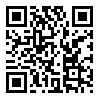
 , Kambiz Karimi1
, Kambiz Karimi1 
 , Asma Mousivand2
, Asma Mousivand2 
 , Hossein Khosrow Panah1
, Hossein Khosrow Panah1 
 , Mohammad Hossein Motazedian3
, Mohammad Hossein Motazedian3 

2- Department of patobiology, School of Veterinary Medicine, Shiraz University
3- Department of Parasitology and Mycology, School of Medicine, Shiraz University of Medical Sciences, Shiraz, Iran ,
Abstract
Background and Objective: Cryptosporidium spp are parasitic protozoa that can cause cryptosporidiosis, leading to diarrhea, particularly in developing countries. While healthy individuals may have mild or asymptomatic infections, those with weakened immune systems can experience severe illness.
Methods: This study employed microscopic methods to investigate the prevalence of Cryptosporidium spp. in domestic animals, including cattle, sheep, and horses, in Shiraz County, Fars Province. This study, conducted in 2023, collected 189 fecal samples from cattle, sheep, and horses in Shiraz County, focusing on both diarrheal and non-diarrheal animals. SPSS version 21 was used for statistical analysis, applying Fisher's exact test to evaluate the association between diarrhea and Cryptosporidium infection (p < 0.05).
Results and Conclusion: In this study, the prevalence of Cryptosporidium in 189 fecal samples was found to be 22.7%. Cattle had the highest rate at 30.16%, while sheep and horses had lower rates of 20.63% and 17.46%. These results highlight the need for monitoring infections in livestock showing gastrointestinal issues. This study highlights the significant prevalence of Cryptosporidium in domestic animals in Shiraz County, emphasizing the need for ongoing surveillance and management to mitigate zoonotic transmission risks in Animal Husbandry settings.
Received: 2025/04/8 | Accepted: 2025/07/3
| Rights and permissions | |
 |
This work is licensed under a Creative Commons Attribution-NonCommercial 4.0 International License. |
